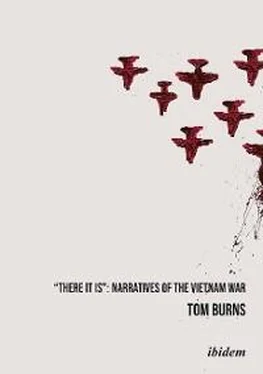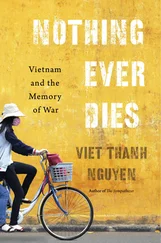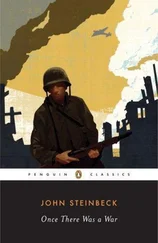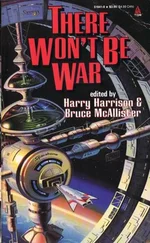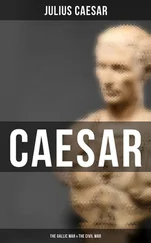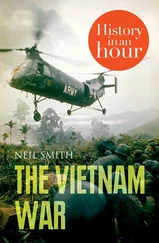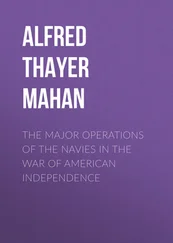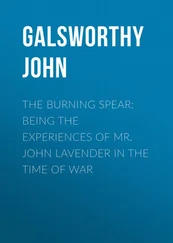A great deal of blame has been assigned to American soldiers for morally despicable acts committed in Vietnam. The mother of Paul Meadlo, one of the men who participated in the My Lai massacre, is said to have complained: “I sent them a good boy and they made him a murderer”. Meadlo was ordered by his platoon leader, Lt. Calley, to open fire on a group of civilians, and they both stood about ten feet from the victims, blazing away on full automatic: “It was pure carnage, with heads shot off along with limbs…” After a few minutes, Meadlo was emotionally unable to continue. Only a few children who had been protected by their mothers remained alive, but “Calley opened fire again, killing them one by one.” 69
Without exculpating Calley, who led the massacre, or the men who followed him (some of them refused), it should be more widely understood that, historically, evil has been perpetrated by every army upon both POWs and civilians in virtually every war. In World War II, atrocities committed by American soldiers remained unknown to the general public because reports and images of such acts were censored by the government propaganda apparatus, which, in the absence of television cameras and independent reporting, was more effective in controlling images and information from battle zones.
It is also noteworthy that the GIs in Vietnam have assumed a greater share of responsibility for their actions than veterans of previous wars, a point that becomes clear when one compares the fiction and memoirs of the two world wars with those of Vietnam. In his discussion of Larry Heinemann’s novel Close Quarters (1977), in which the characters engage in atrocities, Tobey C. Herzog asks if the responsibility for such acts belongs to the individuals, what he calls “the evil within,” or the war environment, “the evil without.” He concludes that the issue is evaded in this novel as well as in others, but adds that “evidence in Heinemann’s novel points toward an environmental cause.” 70Cornelius Cronin has argued in his discussion of atrocities that, contrary to the external cause theory, in this particular aspect the Vietnam veterans may be differentiated from their counterparts in earlier wars:
There is a clear sense that evil and good are inextricably mixed in war, and that soldiers must see themselves as individuals capable of acting and therefore capable of performing evil actions. World War I and II soldiers tended to see themselves as passive, as being acted upon by the war and their societies. 71
There is a consensus among commentators that another important reason for the distress of the Vietnam veterans, as compared to those men who had undergone the horrors of combat in earlier wars, is the awareness of the Vietnam veterans that they had been singled out and that their sacrifices were not appreciated because they were pointless. It is worth noting that during World War II, nearly every able-bodied man in the United States, 12 million in all, from every social class and occupational group, went into the armed forces. There was a popular perception, Paul Fussell writes, that World War II was the most democratic war ever fought:
Some readers will remember the Vietnam antiwar slogan “What if there was a war and nobody went?” Well, in 1939-45 there was a war and everybody went, or nearly everybody: all classes, all races, both sexes. Civilians, too, worked, suffered, sometimes fought, died. For once in human history, a war was fought that was everybody’s war. 72
These soldiers had the full support of a civilian population that agreed with their president that the war was necessary and just, requiring a united effort by all Americans, but the case of the Vietnam combatants was markedly different. In the oral and written accounts, the men in Vietnam constantly register bitter complaints about what they consider Vietnamese ingratitude. But as Frances FitzGerald has argued, after the US had set up a military dictatorship in Vietnam, defended it against all native resistance, killed or maimed thousands of Vietnamese, made thousands more homeless and destroyed their livelihoods, it was unrealistic to expect the Vietnamese to feel gratitude, especially when it was felt that the Americans were using Vietnamese soil to fight a war that was really directed against the USSR and China. 73Such geopolitical matters, however, were of little concern to the fighting men, who were misled about their role as liberators, since they often harbored in their minds the stories of fathers and uncles and the heroic cinematic images (such as the often seen films of American troops marching and riding triumphantly into Paris) of World War II.
In their disillusionment, these soldiers came to realize that instead of liberators they were regarded by both the Vietnamese people and an increasing segment of their own people as brutal invaders, because once in the field they were often ordered by superiors to do things that resulted in the destruction of villages and the terror of the civilian population—hardly the most effective way to win hearts and minds. Such acts generated negative feelings toward the American soldiers, which were often returned with interest. As extreme reactions, outrage and anti-Vietnamese feeling could result in atrocities. By this logic, it is no accident that the My Lai massacre, the worst recorded atrocity, occurred in 1968, the year of the highest number of American casualties.
Another factor contributing to increased stress was lack of motivation. In the limiting circumstance of the one-year tour, the men naturally wanted to be in the field for the shortest time possible to reduce their chances of being killed or wounded. As Ward Just wrote: “The principal criticism of the twelve-month tour was that it tended to institutionalize impermanence. Men in Vietnam were transients, traveling salesmen of war and democratic processes.” 74Their adversaries, however, knew that they were in the war for the duration and were far more ideologically motivated. The American combatants in Vietnam were in fact aware of their own lack of motivation compared to the apparent dedication, staying-power, and moral purpose of their adversaries. As one man put it, “we were playing games and they were fighting for keeps.” 75As Fox Butterfield has described the enemy, they were
men who were well-disciplined enough to march down the [Ho Chi Minh] trail even while thinking that for the vast majority of them it would be a one-way trip. They were men who subsisted for weeks at a time on little better than a handful of rice and some roasted salt. They were bombed by B-52s that fly so high they could neither see nor hear them until the bombs exploded. Once in the South they were not able to send or receive mail; and if they died, their families were not notified for years afterwards, if ever. 76
What the men of the revolutionary forces lacked in sophisticated weaponry they made up for in commitment, as can be seen by comparing their combat effectiveness with that of the far less motivated soldiers of the Army of the Republic of Vietnam (ARVN), who fought well only when they were protecting their native villages. Political lessons were as important a component of the NLF and NVA soldier’s life as military training. Communism was taught as, and perceived to be, a political system that offered greater material prosperity and justice for the Vietnamese people as a whole, as well as liberation from foreign rule, a notion that is much more plausible to soldiers fighting on their own soil. In the fictional narratives, American soldiers are often represented as well aware of the enemy’s commitment, as seen in this dialogue between two “grunts” (infantry soldiers):
“They really come at you.”
“They’re hard-core.”
“They come right at you. And they keep coming until you kill them…They ain’t never gonna stop, are they, Pablo?”
Читать дальше
